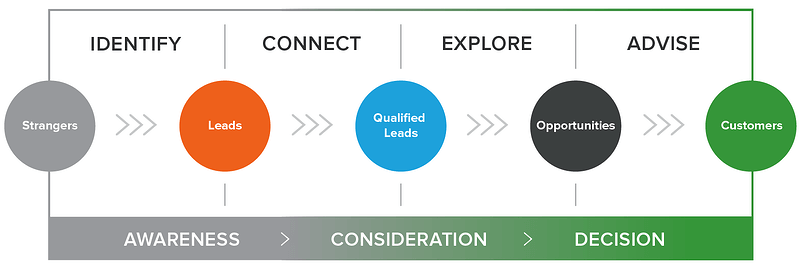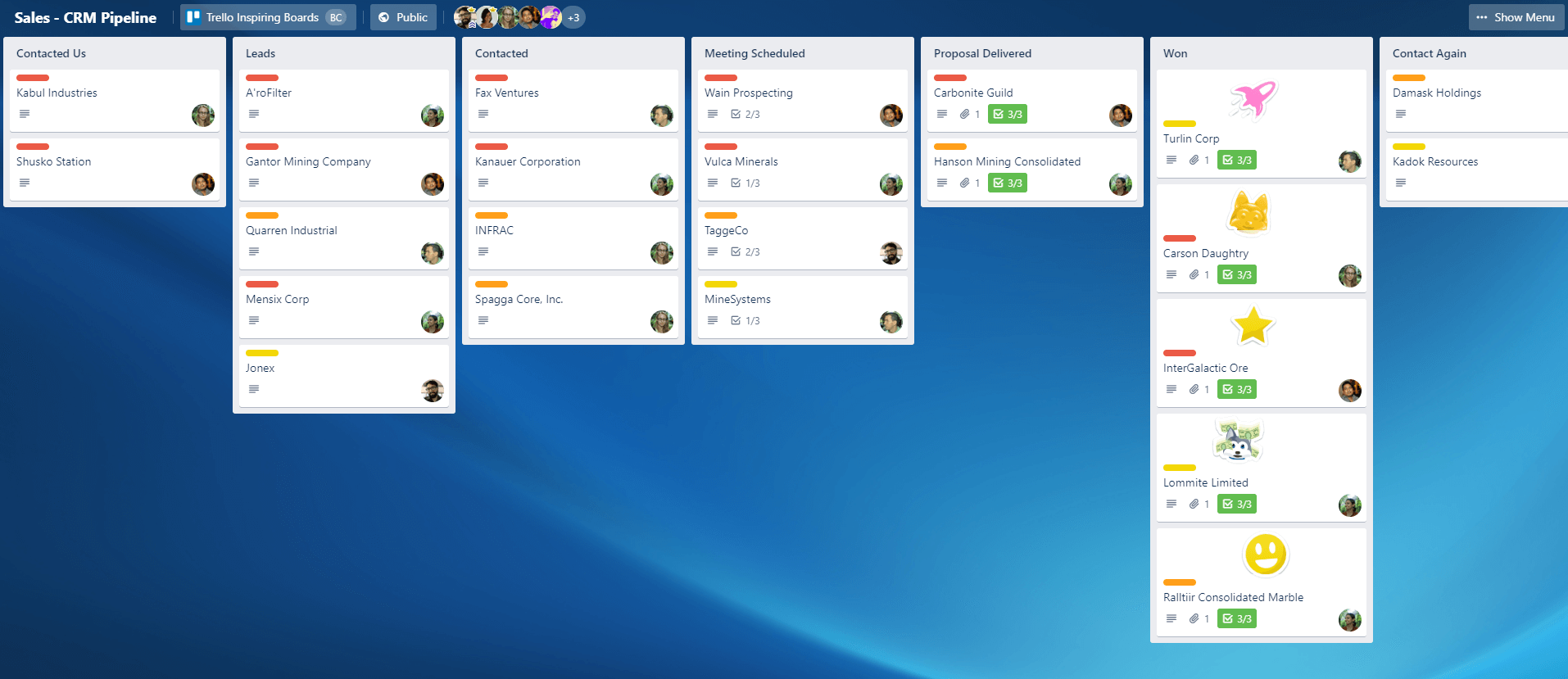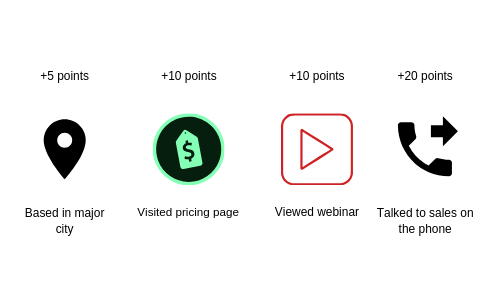A comprehensive sales strategy should involve all of the steps that take place in a sale, from who you’ll target and how you’ll target them, to the tools and processes you’ll use.
Many sales strategies are living documents and will be continuously updated with information relevant to the company and sales team to optimize future activities.
Benefits of a Sales Strategy
A well-thought-out strategy will allow your sales reps to use their time in the most productive way possible, as well as allow your marketing team to position your company and products most effectively.
Here are just a few of the benefits of creating one:
1. Spend More Time on High-Impact Activities
All small or growing businesses have been there. You’re trying to increase your sales and revenue but have been struggling to find an acquisition channel that can regularly generate leads.
Once you know who your ideal buyer persona is, you’ll be able to figure out exactly how to target them, and what value propositions they find compelling.
With a sales strategy in place, you and your team will be able to use your time more productively, focusing only on activities that move the needle.
2. Grow Your Revenue & Pipeline
A range of options is available to grow your revenue, which could include increasing your price point or focusing on acquisition channels that have a higher conversion rate than others.
Research has shown that when sales and marketing teams work closely and strategically together, companies see 38% higher sales win rates.
3. Create Repeatable Systems
A strategy will help you identify the best way to systematize processes, and create more predictable growth.
You’ll be able to apply your most effective sales strategies to all of your leads, rather than just guessing what they’ll want to hear from you.
For example, if customers receiving a demo call convert 50% higher than those who don’t, you have a clear action that should be repeated in all sales interactions.
Inbound Sales vs. Outbound Sales vs. Account-Based Marketing
There is no need to use the above strategies exclusively, but your business model and customer base will likely dictate that you lean more heavily on one or two of them.
Inbound Sales
Inbound sales strategies leverage content that your leads will find valuable. This form of sales combines aspects of both sales and marketing more than an outbound strategy does.
An example of inbound sales in practice could be your marketing team syndicating your latest content to leads.
Once your whitepaper piques their interest, you can follow up to schedule a product demo, or learn more about their pain points.

Your sales reps provide more of an advisory role throughout the process, engaging with leads to ensure your product is a great fit for them.
Outbound Sales
Outbound sales strategies rely on you to source and contact leads, rather than waiting for them to come to you. Lots of great businesses have been built on the back of cold email and cold calling, and there’s no reason why it shouldn’t work for yours.
If you use an outbound sales strategy it will mean you need to have a very compelling offer, and your sales process needs to be seamless. You must also ensure that you’re sourcing leads in a GDPR-compliant manner, which is something DemandScience can help with.
Account-Based Marketing
Account-based marketing (ABM) involves strategically targeting leads based on their likelihood to purchase, based on the fit they provide for your product’s target audience. Then you create unique, highly-relevant content designed to nurture leads, helping your team close the accounts more easily.
ABM campaigns usually involve engaging with multiple decision-makers inside a target company. The goal is to provide as much useful information as possible and make converting the account into a customer more straightforward as you build buy-in from all key decision-makers.
Good ABM campaigns require close collaboration between sales and marketing.
An example of an ABM campaign in practice would be paid ads on LinkedIn targeting your key accounts at the same time your sales team is reaching out with cold emails. It flips traditional sales and marketing on its head because you start by defining who you’re targeting, then build the campaigns around converting them.
If your team has the resources to invest in an ABM strategy we’d highly recommend it.
Steps to Build Your Sales Strategy
1. Consider Your Industry, Product/Service, and Buyer Persona
The very first thing to consider is your ideal customer and how your strategy will position your business to them.
- What are their pain points?
- Where do they research new solutions?
- What’s the most effective way to reach decision-makers?
Another important factor is your Average Contract Value (ACV). If your ACV is low, you’ll use different tactics for a business with a high ACV, and vice-versa.
Some industries rely heavily on trade shows and in-person meetings, whereas in others you’ll be able to network and sell over the internet.
2. Setting Sales Goals
Your sales goals should reflect the wider company goals.
Once you’ve determined your main sales goals, you can break that down into achievable KPIs and individual goals for your sales reps.
For example, send 100 cold emails to leads per week.
The key is that your sales goals should reflect what you expect your team to spend their time doing, and what your final result should look like.
3. Determine key acquisition channels
To determine the key channels, start with your buyer personas. Who is your ideal customer, and what’s the best way to connect with them?
Depending on who you’re selling to, there will be a mix of effective demand generation strategies you can try.
These could be:
- Cold emails and cold calls
- Niche Facebook groups
- Google Ads for specific keywords
If you’re selling a solution that costs $10 per month for customers, then cold emailing and cold calling won’t be the right channel for you. Rather, you should be focusing on acquisition channels that are less time-intensive for your sales team.
On the other hand, if your solution is an expensive and rarely purchased item then cold emails could be a viable initial strategy to educate customers before they’re ready to engage on the phone.
4. Measuring Sales Performance
The only way to know if you’re hitting your targets or not is by measuring everything you do.
If you’re not tracking your metrics, you don’t know what’s working and will be wasting valuable resources.
There are a variety of sales goal trackers out there.
Some tools like Trello or Microsoft Excel (or Google Sheets) can be used to create a solid goal-tracking system, but aren’t built specifically for tracking sales goals.

As long as you have a clear process for tracking goals and your team is on board with it, any tool can work.
Many customer relationship management (CRM) systems, such as Pipedrive, have built-in analytics and you can see detailed reports on metrics like the number of cold emails sent, average open rates, response rates, and even revenue forecasts.

Using a CRM is highly recommended, as over 50% of sales teams report improved productivity when using a CRM to track their work.
Having a clear goal tracking system is key if you want to ensure your sales team is using their time efficiently, and that your sales strategies are working.
5. Automating Processes
Once your sales strategy is working, it’s time to automate repetitive processes.
If you’re seeing good results with initial sales efforts you’re going to quickly get very busy managing everything. Automating your sales processes is a great first step to making your team’s work easier.
This will cut the time spent on boring tasks that keep your sales reps from spending their time talking to great leads.
Solutions from DemandScience can help you create lead lists based on your buyer persona. You can filter by criteria such as job titles, industry, company size, company tech stacks, and anything else that will help you narrow down your ideal customer and access contact details for them.
You can also use tools like Lead Forensics to see who is visiting your site, and then reach out to them. The less time you spend manually searching for new leads, the better.
Lead scoring is another crucial part of your sales process and one that can be automated.

There is a range of CRMs that provide lead scoring, such as HubSpot CRM, Salesforce, and Agile CRM.
Once your lead scoring is automated, your sales team will know exactly when to reach out to leads and will be able to prioritize their time.
Optimizing Your Sales Strategy
It’s important to optimize your sales strategy to ensure it’s still getting the most out of your resources.
Look for areas of campaigns that may be underperforming and optimize them one by one.
For example, if your cold email open rates are low, there are two potentially critical culprits:
- Your subject lines aren’t compelling
- You’re not emailing the right people
Alter one of these variables and monitor how it affects the outcome.
Don’t Forget Your Existing Customers
You’re 60-70% more likely to sell to an existing customer than a new one.
To keep up those kinds of numbers you need to ensure your customer satisfaction remains high. Every year, companies in the US lose over $136 billion to avoidable consumer switching.











